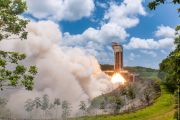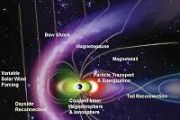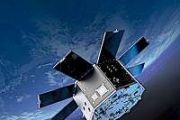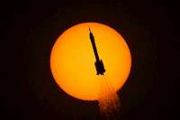
Copernical Team
The truth about space traffic management
 Those familiar with air traffic management architectures understand the constraints of aircraft flying in the atmosphere, vehicle dynamics and command and control techniques. Unfortunately, space traffic has many more degrees of freedom and much less control capability. Add to this the completely uncontrolled nature of space debris and the reality that most debris objects cannot be tracked and m
Those familiar with air traffic management architectures understand the constraints of aircraft flying in the atmosphere, vehicle dynamics and command and control techniques. Unfortunately, space traffic has many more degrees of freedom and much less control capability. Add to this the completely uncontrolled nature of space debris and the reality that most debris objects cannot be tracked and m British military launches its own Space Command with official opening
 Britain established its Space Command on Friday in a ceremonial opening, with responsibilities split between three specific groups to form a joint space command, Britain's Ministry of Defense announced on Friday.
The British military budget includes $1.95 billion, over 10 years, for space capabilities, part of a defense budget increase of $33.34 billion in the next four years.
Of
Britain established its Space Command on Friday in a ceremonial opening, with responsibilities split between three specific groups to form a joint space command, Britain's Ministry of Defense announced on Friday.
The British military budget includes $1.95 billion, over 10 years, for space capabilities, part of a defense budget increase of $33.34 billion in the next four years.
Of Hypersonic missile booster rocket fails to ignite in test
 In a test of a hypersonic booster rocket, a test rocket was successfully released from a B-52H bomber but failed to ignite, the U.S. Air Force said this week.
The test of the rocket propelling the AGM-183A Air-Launched Rapid Response Weapon was its second, and occurred on Wednesday at Edwards Air Force Base, Calif.
An Air Force statement on Thursday said that the booster test roc
In a test of a hypersonic booster rocket, a test rocket was successfully released from a B-52H bomber but failed to ignite, the U.S. Air Force said this week.
The test of the rocket propelling the AGM-183A Air-Launched Rapid Response Weapon was its second, and occurred on Wednesday at Edwards Air Force Base, Calif.
An Air Force statement on Thursday said that the booster test roc India set to launch powerful new satellite for trans-border movement detection
 Due to the ongoing coronavirus pandemic, several Indian Space Research Organisation (ISRO) projects have been delayed, including key programmes like Chandrayaan-3 and the ambitious manned mission Gaganyaan. However, starting next month, the agency will again take up launch activities at the Sriharikota spaceport.
The Indian government on Thursday announced that the country's first state-of
Due to the ongoing coronavirus pandemic, several Indian Space Research Organisation (ISRO) projects have been delayed, including key programmes like Chandrayaan-3 and the ambitious manned mission Gaganyaan. However, starting next month, the agency will again take up launch activities at the Sriharikota spaceport.
The Indian government on Thursday announced that the country's first state-of ISSRDC to highlight opportunities within biomanufacturing in space
 The 2021 International Space Station Research and Development Conference (ISSRDC) will feature a fireside chat on biomanufacturing in space. Gary Rodrigue, director of programs and partnerships at the Center for the Advancement of Science in Space (CASIS), will moderate a discussion with Dr. William Wagner, director of the University of Pittsburgh's McGowan Institute for Regenerative Medicine. T
The 2021 International Space Station Research and Development Conference (ISSRDC) will feature a fireside chat on biomanufacturing in space. Gary Rodrigue, director of programs and partnerships at the Center for the Advancement of Science in Space (CASIS), will moderate a discussion with Dr. William Wagner, director of the University of Pittsburgh's McGowan Institute for Regenerative Medicine. T Kleos establishes partnership with Japan Space Imaging Corporation for promotion in Japan
 Kleos Space S.A. has established a partnership with Japanese based Japan Space Imaging Corporation (JSI) to support Kleos' geolocation data promotion in Japan.
Under the agreement, Kleos' RF geolocation data will enhance Japanese customers in their operations, such as defense of the homeland, and identification of illicit activities in territorial and international waters.
Kleos' Gro
Kleos Space S.A. has established a partnership with Japanese based Japan Space Imaging Corporation (JSI) to support Kleos' geolocation data promotion in Japan.
Under the agreement, Kleos' RF geolocation data will enhance Japanese customers in their operations, such as defense of the homeland, and identification of illicit activities in territorial and international waters.
Kleos' Gro Navy tests MQ-4C unmanned aerial vehicles with upgraded sensors
 An MQ-4C Triton unmanned aerial vehicle equipped with an upgraded multi-intelligence configuration was successfully tested this week, the U.S. Navy announced.
The test is regarded as a milestone in the improvement of the vehicle, the U.S. Navy's premier high-altitude long-endurance, or HALE, maritime intelligence, surveillance and reconnaissance platform, builder Northrop Grumman said i
An MQ-4C Triton unmanned aerial vehicle equipped with an upgraded multi-intelligence configuration was successfully tested this week, the U.S. Navy announced.
The test is regarded as a milestone in the improvement of the vehicle, the U.S. Navy's premier high-altitude long-endurance, or HALE, maritime intelligence, surveillance and reconnaissance platform, builder Northrop Grumman said i Rocket Lab launches US Space Force mission
 Rocket Lab, the leading launch provider and space systems company, has successfully launched a research and development satellite to orbit for the United States Space Force (USSF). The mission was Rocket Lab's fourth launch for the year and its 21st Electron mission overall.
The mission, named 'It's a Little Chile Up Here', launched from Rocket Lab Launch Complex 1 on New Zealand's Mahia P
Rocket Lab, the leading launch provider and space systems company, has successfully launched a research and development satellite to orbit for the United States Space Force (USSF). The mission was Rocket Lab's fourth launch for the year and its 21st Electron mission overall.
The mission, named 'It's a Little Chile Up Here', launched from Rocket Lab Launch Complex 1 on New Zealand's Mahia P Nauka Module incident caused by software failure
 The sudden activation of engines of Russia's Nauka multipurpose laboratory module at the International Space Station (ISS) was triggered by a software failure that was quickly fixed, Russia's ISS segment chief, Vladimir Solovyov, explained on Friday.
"The mechanic aspect of the docking was reliable, without any remarks registered. This resulted in the closure of both docking mechanisms: th
The sudden activation of engines of Russia's Nauka multipurpose laboratory module at the International Space Station (ISS) was triggered by a software failure that was quickly fixed, Russia's ISS segment chief, Vladimir Solovyov, explained on Friday.
"The mechanic aspect of the docking was reliable, without any remarks registered. This resulted in the closure of both docking mechanisms: th Boeing attempts uncrewed test flight to ISS a second time
 Boeing will be aiming to get its spaceflight program back on track Tuesday with an uncrewed flight of its Starliner capsule to the International Space Station (ISS), after its last such test in 2019 ended in failure.
The spaceship is due to launch on an Atlas V rocket built by the United Launch Alliance from Cape Canaveral Space Force Station in Florida at 1:20 pm Eastern time (1720 GMT).
Boeing will be aiming to get its spaceflight program back on track Tuesday with an uncrewed flight of its Starliner capsule to the International Space Station (ISS), after its last such test in 2019 ended in failure.
The spaceship is due to launch on an Atlas V rocket built by the United Launch Alliance from Cape Canaveral Space Force Station in Florida at 1:20 pm Eastern time (1720 GMT). 
































